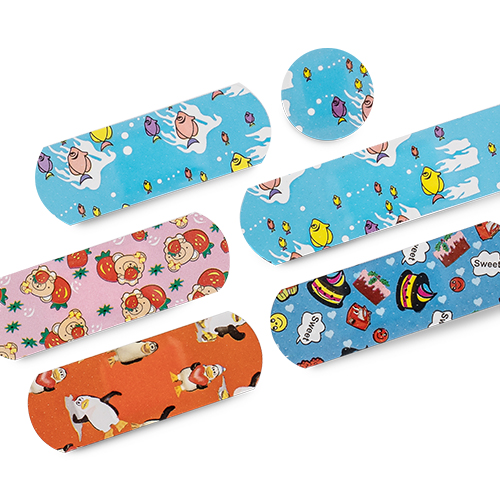News Categories
I believe that most of our friends have used Wound Plasters. For example, they will put one on when they break their knees or elbows. So many people have a misconception about Wound Plasters: they are a "universal patch." They can put them on at will, whether for sprains, contusions, lacerations, or even skin diseases. This statement is wrong!

Wound Plasters, also known as anti-inflammatory patches and hemostatic patches, are a common topical dressing. Its main effect is to help prevent the invasion of bacteria and foreign bodies, thus protecting wound hygiene, preventing infection, and accelerating wound healing. In addition, some Wound Plasters have a certain degree of waterproof function, suitable for swimming, bathing, and other occasions.
Wound Plasters are mainly used for small and superficial wounds, such as small cuts when peeling melons and fruits, small scrapes caused by falls, glass scratches, etc., when they can play a role in stopping bleeding and protecting the wounds. However, the following wounds are not suitable for the use of Wound Plasters.
(1) Wounds that have become infected. If the wound is red, swollen, hot, painful, or has become pus, the infection has likely occurred, and this time should not use Wound Plasters but go to the hospital for treatment. Generally speaking, burns tend to become infected wounds and require special attention;
(2) Wounds that are larger, deeper, or have foreign bodies. For example, nails, and deep wounds, even if the appearance of the wound looks small, should not be treated with Wound Plasters. Deep wounds tend to form a lack of oxygen space, and anaerobic bacteria may increase if the use of Wound Plasters is more conducive to the survival of anaerobic bacteria;
(3) animal bite wounds. Wounds after being bitten by animals such as dogs and cats should not use Wound Plasters, but should go to the hospital as soon as possible and rabies vaccination;
(4) Wounds from skin diseases. For example, boils, carbuncles, and chronic ulcers on the skin are also contraindicated with Wound Plasters.
As for Wound Plasters, three steps are generally followed when using them.
(1) The wound should be cleaned and disinfected before use. If the wound has mud, dirt, etc., you need to clean the wound with water or saline before using the Wound Plaster;
(2) After the Wound Plaster is unsealed, do not touch the middle compound pad to avoid bringing in bacteria, and the compound pad should be aligned with the wound site. The Wound Plaster should not be wrapped too tightly, and after it is applied, pay attention to lightly press the peripheral parts;
(3) Wound Plasters are disposable products and cannot be used repeatedly. To keep the wound hygienic, change the Wound Plaster every day until the wound is healed. If the Wound Plaster absorbs water during washing or bathing, it should also be replaced in time.
It is important to note that Wound Plasters are sealed sterile products and should not be used if the package is broken. Wound Plasters also have an expiration date and should not be used if they have expired. If there is a burning sensation, itching, redness, or swelling at the site of use, stop using it immediately. Wound Plasters are hypoallergenic products and generally do not cause allergic reactions, but if allergies occur, stop using them.
In short, although Wound Plasters are common, they should be used with more attention, and not all wounds can be used. If you need more detailed information, welcome to contact us!
Changzhou Major Medical Products Co., Ltd. was established in June 2005, focusing on the field of medical supplies for 17 years. It is a high-tech enterprise that is quality-oriented, engaged in the research and development, production and sales of advanced medical dressings.